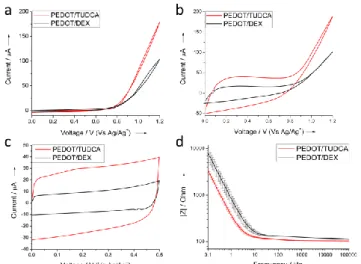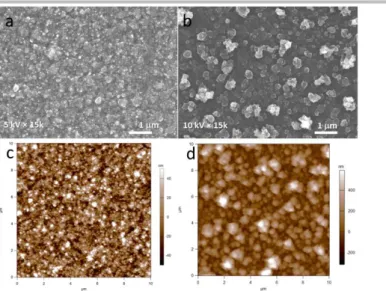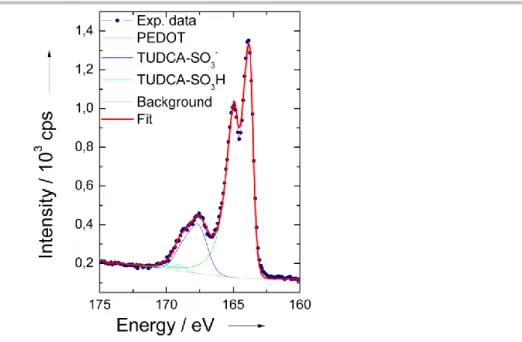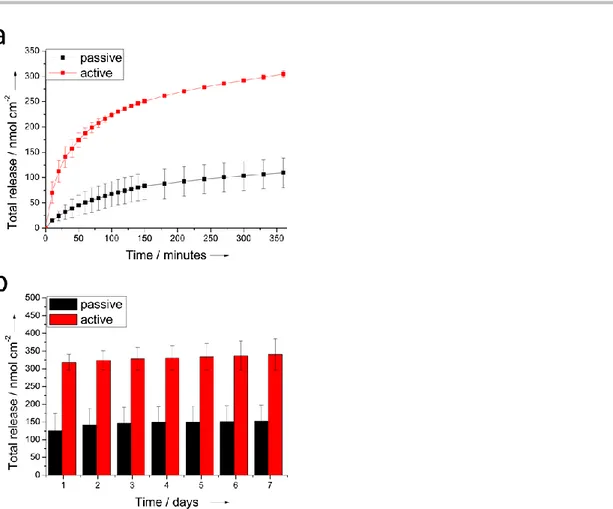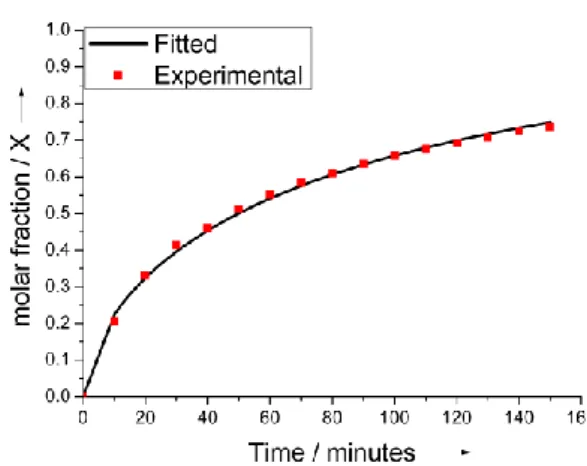A New Drug Delivery System based on Tauroursodeoxycholic
and PEDOT
Stefano Carli, Dr.; Giulia Fioravanti; Andrea Armirotti; Francesca Ciarpella; Mirko Prato; Giuliana Ottonello; Marco Salerno; Alice Scarpellini; Daniela Perrone; Elena Marchesi; Davide Ricci; Luciano Fadiga
Abstract: Localized drug delivery systems based on conductive polymer films represent one of the most challenging uses of this class of
materials. Typically, anionic drugs are incorporated within the conductive polymer backbone through the electrostatic interaction with the positively charged polymer. Following this approach, the synthetic glucocorticoid Dexamethasone-phosphate is typically delivered from neural probes to reduce the inflammation of the surrounding tissue. Encouraged by recent literature on the neuroprotective and anti-inflammatory properties of Tauroursodeoxycholic (TUDCA), we incorporated for the first time this natural bile acid within Poly(3,4-ethylenedioxythiophene) (PEDOT). We demonstrated that the new material PEDOT-TUDCA can efficiently promote an electrochemically controlled delivering of the drug, while preserving optimal electrochemical properties. Moreover, the low cytotoxicity observed with viability assay, makes PEDOT-TUDCA a good candidate for neuroscience applications.
Introduction
The development of implantable microelectrodes, capable of recording and/or stimulating the activity of neurons, has revolutionized the field of neuroscience applications by enabling bidirectional communication with neural tissue at high resolution.[1] Unfortunately, one of the main concerns related to chronically implanted intracortical neural microelectrodes is the adverse reaction of the surrounding tissue, which is known to encapsulate the neural microelectrodes after few weeks post-implantation, leading to the loss of neural recording/stimulating ability.[2] Thus, the modulation of the reactive tissue response represents one of the main goals to be reached in order to account for long-term use of neural intracortical implants.
In this context, localized drug delivery from biocompatible poly(3,4-ethylenedioxythiophene) (PEDOT) coated on neural probes is one of the most powerful tools to reduce the foreign body response as well as to overcome the well-known issues related to the systemic administration of high dosage of glucocorticoids.[3]
For this purpose, the use of potent synthetic anti-inflammatory Dexamethasone phosphate (DEX) is widely reported.[4] With the typical ionic-approach DEX acts as the dopant during the electrodeposition of PEDOT-DEX composite, counterbalancing the positive charges of the conductive polymer. Thus, this approach leads to an electrochemically controlled drug release system.[5] Very recently, we reported a new promising approach which is based on the chemical functionalization of PEDOT with Dexamethasone to provide a biochemically hydrolysable drug release system.[6]
Recent studies suggest that Tauroursodeoxycholic acid (TUDCA) may have cytoprotective and anti-apoptotic action, with potential neuroprotective activity: TUDCA acts as a mitochondrial stabilizer and anti-apoptotic agent in several models of neurodegenerative diseases, including Alzheimer’s disease, Parkinson’s disease and Huntington’s disease.[7] Moreover, anti-inflammatory properties of TUDCA toward acute neuroinflammation on an animal model were reported: in particular, TUDCA exerts its anti-inflammatory neural activity by reducing the microglial and astrocytes cells activation which represents the same activation pathway due to neural device implantation.[8]
TUDCA is a hydrophilic bile acid that is produced in the liver and is widely used for treatment of acute and chronic liver diseases in human.[9] Its structure is composed by ursodeoxycholic acid (UDCA) conjugated with taurine, through an amide bond, as depicted in Figure 1.
Figure 1. Chemical structure of TUDCA.
Surprisingly, to the best of our knowledge, drug delivery systems based on the incorporation of TUDCA within conductive polymers have not been reported hitherto, nor is its application as a potential anti-inflammatory agent for in vivo neural studies. Hence, we incorporated for the first time TUDCA within PEDOT backbone through the ionic-approach, which is expected to promote an electrochemically controlled delivery of the drug. Furthermore, we compared the new PEDOT-TUDCA composite with the
well-known DEX-P conjugate (PEDOT-DEX) in terms of electrochemical as well as morphological properties.[4]
Results and Discussion
Electrodeposition and Electrochemical Characterization
According to the chemical structure of TUDCA (Figure 1), the SO3- group of the taurine unit can act as the dopant to counterbalance the positive charges of PEDOT during the anodic electrodeposition. It is worth noting that sulfonate based dopants, like paratoluene sulfonate (PTS) or polystirenesulfonate (PSS), are among the most typically used counter ions to prepare stable and highly biocompatible PEDOT coatings.[10] The electrodeposition method adopted in this study was the cyclic voltammetry, that was reported to furnish improved film morphologies, with respect to galvanostatic and potentiostatic methods.[11] Figures 2a and 2b report the electrodeposition plots (first and last scan, respectively) of PEDOT-TUDCA. The onset of EDOT oxidation is cathodically shifted of 200 mV in water solution (pH 6), with respect to the mixture of acetonitrile and water (pH 1). This suggests that the film formation is strongly influenced by the operating conditions. In fact, it is known that the pKa values are solvent dependent and, therefore, the ability of TUDCA to act as a dopant for PEDOT strongly depends on the extent of the dissociation of the sulfonate groups.[12] Moreover, a reduction of the oxidation potential of EDOT was observed in water, rather than organic solvents, due to a higher stabilization of the cationic oxidized monomer by the solvent.[13] The higher availability of free SO3- groups in neutralized water solution reflects in a more effective doping during the electrodeposition, that finally leads to higher capacitance (Figure 2b,c) as well as to lower impedances (Figure 2d) (in comparison with films obtained in ACN/water).
Figure 2. Typical a) first and b) last deposition plot, c) cyclic voltammetry and d) Bode absolute impedance (n = 3) for PEDOT-TUDCA prepared in ACN/H2O
Once the electrodeposition method was optimized, we compared the electrochemical properties of PEDOT-TUDCA films to those of PEDOT-DEX films prepared in the same conditions. The oxidation of EDOT is shifted by 50 mV at lower overpotentials in the presence of TUDCA with respect to DEX-P (as observed by the onset of the curve in Figure 3a). An extra-stabilization of the oxidized EDOT, leading to a reduction of its oxidation potential, has been reported for electrodeposition in presence of surfactants.[13] It is also known that natural bile acids, including TUDCA, are biological surfactants involved in the solubilisation and absorption of dietary fat and lipid soluble endogenous molecules as well as hydrophobic drugs.[9,14] Moreover, the steeper oxidation curve as well as the presence of the typical trace crossing point during the reverse sweep (see the first cycle deposition reported in Figure 3a, S1), are consistent with a kinetically favored electrodeposition of EDOT in the presence of TUDCA, with respect to PEDOT-DEX film formation.[15] In fact, it is widely accepted that the mechanism of electropolymerization of five-membered heterocycles, including PEDOT, involves the coupling of two radicals to produce a dihydro oligomer di-cation which leads to an oligomer after loss of two protons and re-aromatization.[16] Thus, the polymer growth at the electrode interface is dominated by the precipitation of oligomers that become insoluble in the electrolyte. The higher faradaic current exchanged during the deposition of PEDOT-TUDCA is in accordance with an improved film formation, in terms of higher thickness, higher capacity (Figure 3c) and lower |Z| impedance (Figure 3d).
Figure 3. Typical a) first and b) last deposition plot, c) cyclic voltammetry and d) Bode absolute impedance (n = 3) for PEDOT-TUDCA and PEDOT-DEX,
respectively.
It is important to note that, for the sake of neural recording and stimulation, lower impedances and higher charge storage capacities represent the most desirable properties, in order to reach higher S/N ratios as well as improved charge injection limits.[17] Furthermore, EIS analysis suggests an improved charge transport dynamics along the conductive film of PEDOT-TUDCA, when compared to PEDOT-DEX, as confirmed by the wider range of frequency independent impedance (see also the Bode phase plot of Figure S2), in accordance with literature.[18]
Optical and Surface Characterization
The surface morphology of PEDOT-TUDCA and PEDOT-DEX films was characterized by means of Scanning Electron Microscopy (SEM) and Atomic Force Microscopy (AFM). As visible in the SEM images of Fig.4a,b both coatings exhibit a granular-like morphology, which is typically observed for electropolymerized PEDOT in aqueous/surfactant electrolytes.[4b,13,19] It is noteworthy that a transition from globular to rod-like and fibrous morphology was reported for PEDOT overoxidation.[20] However, PEDOT-TUDCA exhibits a more compact surface with smaller average grain size of 100 nm, whereas that of PEDOT-DEX is 300 nm. These numbers are confirmed in AFM measurements (Fig.4c,d), which also provide the 3D extension of the grains. As a result of the smaller grains, the PEDOT-TUDCA surface is smoother, with root mean square roughness Sq of 23 nm as compared to the 240 nm of PEDOT-DEX. Concurrently, the developed surface area ratio Sdr, which is the percent additional area contributed by the texture relative to the projected flat area, is higher for the PEDOT-DEX as compared to the PEDOT-TUDCA (details are reported in Table 1).[21]
Figure 4. SEM and AFM surface morphology analysis for PEDOT-TUDCA (a,c) and PEDOT-DEX (b,d).
This is likely due to a higher tendency of PEDOT-TUDCA oligomers to precipitate onto the electrode surface leading to grains of smaller size, when compared to PEDOT-DEX coating, in accordance with the mechanism proposed for the polymer growth.[16] AFM analysis carried out across scratches hand-made with sharp tweezers also allowed to confirm an increased thickness of up to 930 nm for films of PEDOT-TUDCA, with respect to the value of 520 nm for PEDOT-DEX, as suggested by electrochemical characterization.
Table 1. Relevant parameters obtained from AFM analysis.
Sample Film thickness t (nm) Top roughness Sq (nm) [a] Grain size d (nm) [b] Developed surface area ratio Sdr (%)[b] PEDOT-TUDCA 930 50 23 5 100 50 6 PEDOT-DEX 520 50 140 30 300 60 48 [a] 50 µm scan size; [b] 10 µm scan size.
X-ray photoelectron spectroscopy (XPS) was adopted to confirm the presence of the dopant TUDCA within the PEDOT backbone. The S(2p) core-level spectra from films of PEDOT-TUDCA (Figure 5) is dominated by two distinct doublet at the binding energy of 164 eV and 168 eV which can be ascribed to the sulfur atoms of PEDOT and the SO3- groups of TUDCA, respectively.[17b,22] A supplementary doublet can be found at higher binding energy (169 eV): this signal has been ascribed to protonated sulfonate groups SO3H that generate due to the release of protons during EDOT polymerization.[16,22a] The doping-ratio, a parameter that defines the degree of dopant incorporation, can be estimated by the ratio between the SO3- groups of TUDCA and the EDOT sulfur atoms, as obtained by quantitative XPS analysis. In particular, the relative amounts (% molar) of the two S species were calculated in the order of 79.7 (PEDOT) and 18.6 (TUDCA- SO3-) leading to a doping ratio of 0.23, which falls within the typical range of 0.2-0.4 for electrochemically prepared PEDOT composite films.[23] This is consistent with one TUDCA-SO3- dopant for four-five EDOT units.
Figure 5. Typical XPS results collected on PEDOT-TUDCA films over the S 2p binding energy range.
In Vitro Release Study
Cyclic voltammetry (CV) was used to promote an electrochemically controlled delivery of TUDCA. The cathodic potential of -1V (Vs Ag/Ag+) was chosen in order to assess a complete reduction of the conductive film, thereby enabling a more efficient drug release, in according with the CV analysis of PEDOT-TUDCA that shows a pronounced reduction peak at -0.65V (see Figure S3). In Figure 6 we outlined the comparison between the release observed for electrodes subjected to a progressive number of CV cycles (active release) and electrodes immersed in the electrolyte during the same time-windows (see experimental details in the supplementary materials). Both active and passive releases exhibit an initial burst phase, but it is evident (Figure 6a) that there is a significant electrochemical contribution to the rate of release, as well as to the total mass delivered by the active mode. In particular, during 360 minutes (500 CV cycles) the electrodes subjected to active release provided a total amount in the order of 305 ± 6 nmol cm-2 that exceed the cumulative mass spontaneously released (109 ± 29 nmol cm-2). After removing the electrochemical stimulation, TUDCA was passively released over a period of 7 days (despite in some cases the time window extended up to 9-10 days) with a daily amount of release in the order of 2-4 nmol cm-2 (Figure 6b). This result further corroborates the electrochemical contribution to the active release. It is important to note that the electrochemical triggers not only promote a faster release during the analysed 500 CV scans but also influence the total drug mass delivered. In fact, the total release provided by active control was quantified in the order of 340 ± 44 nmol cm-2 whereas a lower value of 152 ± 45 nmol cm-2 was observed for the passive release. It is known that conductive polymers act as electrochemical actuators when subjected to potential sweeping, thereby producing a change in their volume.[24] Therefore, the improved mass delivery obtained with the active control is consistent with an increased accessible area of PEDOT-TUDCA by the electrolyte, due to the expansion and contraction (actuation) of the polymeric film. It is noteworthy that uncontrollable spontaneous release is typically observed for ionically incorporated drugs within PEDOT or conductive polymer based coatings.[25]
Figure 6. Cumulative mass of TUDCA released from glassy carbon electrodes (are 0.07 cm2) coated with PEDOT-TUDCA: a) active Vs passive and b)
spontaneous. The results represent mean+standard error of mean from two different experiments.
Several approaches may be adopted with the aims to slow down the rate of the TUDCA release. For example, Boehler et al. reported that the rate of DEX release was significantly reduced when a second layer of PEDOT-PSS was electrodeposited on the top of the PEDOT-DEX substrate, thereby forcing the drug to diffuse through pores of the stacked layer before they reaching the bulk electrolyte.[25a] Alternatively, the covalent approach that we reported recently, may result suitable for this purpose as well.[6] Despite it was reported how TUDCA reduced glial cell activation induced by proinflammatory stimuli, the biologically active concentration of TUDCA that should be released from a localized drug delivery system was not evaluated so far.[8] For example, a local release of DEX from PEDOT-DEX coatings in the order of 0.5 g cm-2 was established to exert a therapeutic effect toward acute neural inflammation reduction.[26] This means that, assuming similar anti-inflammatory properties for TUDCA and DEX in the central nervous system, PEDOT-TUDCA films should provide a bioactive release of drug even during the final stage of the passive release (see Figure 6b, > 1g cm-2 ). Assuming that the total amount of incorporated TUDCA is in the order of 340 nmol cm-2, as obtained from active control, the kinetic and mechanism of release can be evaluated by modelling experimental data with the Avrami’s equation X = 1 – exp(-kAtn): where X is the molar fraction of released drug, KA and n express the magnitude of release
and are empirically determined. [27] In particular, it has been reported that Avrami’s equation fits well diffusion-controlled and potential-assisted drug release data, particularly for ion exchange release as well as conductive polymers. [27a] Thus, we have used this model to fit experimental data obtained from active release. We found that this equation gave a good fit for the first 70% of release, as can be deduced by visual inspection of Figure 7.
Figure 7. Active release profile: experimental and fitted byAvrami’s model).
The Avrami’s parameter n is related to the release mechanism and, in particular, n = 1 is ascribed to first-order kinetics whereas n = 0.54 corresponds to diffusive release.[27] By plotting ln(-ln(1-X) Vs lnt in Avrami’s equation, the value of n = 0.62 was obtained for experimental data acquired in active mode. This suggests that, once the ionic interaction between PEDOT and TUDCA is removed by the cathodic electrochemical trigger, the subsequent release kinetic is dominated by the diffusion mode.
Cell Viability
Finally, cell viability assay was performed at different time point (1, 3, and 7 days) on PEDOT-TUDCA, PEDOT-DEX substrates to evaluate the cell survival as well as the cytocompatibility of the coatings. This analysis represents the first important step that can be performed to gain insights on the biocompatibility of a new material.[28] PEDOT-PSS was also included due to its well-known biocompatibility.[29] After one day of culture, in all cases the cells were able to adhere to the substrate and they were able to grow up and proliferate progressively from the third to the seventh day of culture, forming a thick layer of living cells (Figure S4). Nevertheless, as outlined in Figure 8, PEDOT-TUDCA appears to be the best long-term growth substrate, whereas in contact with PEDOT-PSS, cell viability appears to be lower for the entire duration of the experiment. This result makes PEDOT-TUDCA a new promising material also in terms of biocompatibility.
Figure 8. Quantitative analysis of the viability of fibroblasts cells cultured on PEDOT-TUDCA (blue bars), PEDOT-DEX (red bars), PEDOT-PSS (gray bars)
substrate at 1, 3, and 7 days in vitro. The percentages of surviving cells (means ± ER) were calculated based on the ratio of total (Hoechst-positive) nuclei minus PI-positive nuclei divided by the total nuclei. *: p-value < 0.05.
Conclusions
In summary, the bile acid TUDCA has been successfully incorporated within PEDOT coatings and a substantial electrochemically controlled release was confirmed. The new PEDOT-TUDCA exhibited promising electrochemical as well as biocompatibility properties even when compared to classic PEDOT-DEX coatings, with ionically incorporated drug. These new
findings, together with recent literature reporting possible therapeutic implications for inflammatory CNS diseases, provide helpful tools for the rational design of advanced localized drug delivery systems using the natural bile acid TUDCA as a substrate. Neuroscience is among those application that may benefit from this new PEDOT-TUDCA composite material. In fact, neural probes coated with PEDOT-TUDCA could offer a powerful possibility of modulating the brain tissue inflammation while preserving recording and/or stimulating the neural activity capability. Nevertheless, further in vivo experiments will be addressed to establish the bioactive drug amount that should be locally delivered by PEDOT-TUDCA coatings, in order to guarantee neuroprotective properties.
Experimental Section
MaterialsAll chemicals including 2,3-Dihydrothieno[3,4-b]-1,4-dioxin (EDOT) and Dexamethasone phosphate (Dex-P) were from Sigma Aldrich (Italy), except otherwise specified. Commercially available glassy carbon (GC) electrodes (diam. 3 mm) were provided by IJ Cambria Scientific Ltd. Ultrapure water (Milli-Q, Millipore, USA) was used for this study. Tauroursodeoxycholic acid was kindly supplied from ICE SpA. Italy. Tauroursodeoxycholic acid, sodium salt was purchased from Glentham Life Sciences Ltd, United Kingdom.
Electrodepositions and Electrochemical Characterization
Cyclic voltammetry (CV), electrochemical impedance spectroscopy (EIS) and coating electrodepositions were carried out using a Reference 600 potentiostat (Gamry Instruments, USA) connected to a three-electrode electrochemical cell with a Pt wire as a counter electrode and a Ag/saturated AgCl reference electrode (+0.197 V vs NHE[30]). EIS were performed in three electrodes cell configuration by superimposing a voltage sine wave modulation (10 mV RMS amplitude, 0 V potential applied) within the frequency interval of 105 - 0.1 Hz. The electrochemical characterizations were collected in a 0.9% w/w sodium chloride aqueous solution.[31]
The electrochemical deposition was carried out in potentiodynamic mode, with a scan rate of 100 mV/s, for a total of 20 cycles. The potential range of 0 V-1.2 V was used for preparation of PEDOT-TUDCA and PEDOT-DEX. A solution of the monomer EDOT (0.01N) and the dopant TUDCA 0.02N in a mixture of water and NaOH (0.018N) or, in alternative, a water solution of the commercially available sodium salt of TUDCA (0.02N) can be used for the deposition of PEDOT-TUDCA. Similarly, the preparation of PEDOT-DEX was achieved by using the dopant DEX-P (0.02N) dissolved in water.
In Vitro TUDCA release
The release of TUDCA from GC coated with PEDOT-TUDCA was conducted in saline solution at 25°C. The experiments were performed in duplicated and the data are presented as the average of all the samples analyzed. Active release from was monitored by subjecting the immersed electrodes to a well-defined number of voltammetric cycles in the potential range of +0.5/-1V at the scan rate of 100 mV s-1. Initially, the number of cycles was set at 10. After removing the electrochemical stimulation the electrodes were kept immersed in the solution for a total time of ten minutes (taking into account that the voltage excursion is equal to 3V a total time of 5 minutes is needed to complete a full 10 cycles trigger). Passive release was obtained by immersing the PEDOT-TUDCA electrodes during the same time window without applying any external electrochemical trigger. For each reading, the release solution was removed and stored at -20°C and the electrode was immersed in a fresh saline solution. After 150 cycles, corresponding to the total time of 150 minutes, the electrodes were subjected to further five set of 50 cycles, and the release solution was refreshed after a total time of 30 minutes/step. Subsequently, all the electrodes were subjected to passive release for a total time of 10 days: in this case the release solution was renewed every 24 hours. Evaluation of the release amount of TUDCA was performed by HPLC analysis (see supporting information for details).
Keywords: Electrochemistry • Drug delivery • Conductive polymers • Electrodeposition • Neural device
[1] a) K. J. Ressler, H. S. Mayberg, Nat. Neurosci. 2007, 10, 1116-1124; b) A. M. Owen, Neuroscientist 2004, 10, 525-537; c) M. A. Nicolelis, Nat. Rev.
Neurosci. 2003, 4, 417-422.
[2] a) R. J. Vetter, J. C. Williams, J. F. Hetke, E.A. Nunamaker, D. R. Kipke, Biomed. Eng. IEEE Trans. 2004, 51, 896–904; b) J. C. Williams, J. A. Hippensteel, J. Dilgen, W. Shain, D.R. Kipke, J. Neural. Eng. 2007, 4, 410-423; c) T. Saxena, L. Karumbaiah, E. A. Gaupp, R. Patkar, K. Patil, M.
Betancur, G. B. Stanley, R. V. Bellamkonda, Biomaterials 2013. 34, 4703-4713; d) R. Biran, D.C. Martin, P. A. Tresco, Exp. Neurol. 2005, 195, 115-26.
[3] a) Z. Aqrawe, J. Montgomery, J. Travas-Sejdicc, D. Svirskis, Sens. Actuators B 2018, 257, 753–765; b) R. Green, M. R. Abidian, Adv. Mater. 2015,
27, 7620–7637.
[4] a) C. Boehler, C. Kleber, N. Martini, Y. Xie, I. Dryg, T. Stieglitz, U. G. Hofmann, M. Asplund, Biomaterials 2017, 129, 176–187; b) E. Castagnola, S. Carli, M. Vomero, A. Scarpellini, M. Prato, N. Goshi, L. Fadiga, S. Kassegne, D. Ricci, Biointerphases 2017, 12, 031002; c) N. A. Alba, Z. J. Du, K. A. Catt, T. D. Y. Kozai, X. T. Cui, Biosensors 2015, 5, 618–646.
[5] a) D. Svirskis, J. Travas-Sejdic, A. Rodgers, S. Garg, J. Controlled Release 2010, 146, 6–15; b) D. Uppalapati, B. J. Boyd, S. Garg, J. Travas-Sejdic, D. Svirskis, Biomaterials 2016, 111, 149–162; c) B. Massoumi, A. Entezami, J. Bioact. Compat. Polym. 2002, 17, 51–62.
[6] S. Carli, C. Trapella, A. Armirotti, A. Fantinati, G. Ottonello, A. Scarpellini, M. Prato, L. Fadiga, D. Ricci Chem. Eur. J. 2018, 24, 10300-10305. [7] a) N. Yanguas-Casás, M. A. Barreda-Manso, S. Pérez-Rial, M. Nieto–Sampedro, L. Romero-Ramírez, Mol Neurobiol 2017, 54, 6737–6749; b) N.
Yanguas-Casás, M. A. Barreda-Manso, S. Pérez-Rial, M. Nieto–Sampedro, L. Romero-Ramírez, J. Neuroinflamm. 2014, 11: 50; c) K. R. Gronbeck, C. M. P. Rodrigues, J. Mahmoudi, E. M. Bershad, G. Ling, S. P. Bachour, A. A. Divani, Neurocrit. Care 2016, 25, 153–166; d)S. Vang, K. Longley, C. J. Steer, W. C. Low, Global Adv Health Med. 2014, 3, 58-69; e) J. D. Amaral, R. J. S. Viana, R. M. Ramalho, C. J. Steer, C. M. P. Rodrigues, J. Lipid
Res. 2009, 50, 1721-1734.
[8] a) A. Noailles, L. F. Sánchez, P. Lax, N. Cuenca, J. Neuroinflamm. 2014, 11, 1-22 (article 186); b) S.S. Joo, T.J. Won, D.I. Lee, Arch. Pharm. Res.
2004, 27, 954–960
[9] J. J. G Marin, World J Gastroenterol 2009,15, 804-816.
[10] S. Baek, R. A. Green, L. A. Poole-Warren, J. Biomed. Mater. Res. Part A 2014, 102A, 2743-2754. [11] V. Castagnola, C. Bayon, E. Descamps, C. Bergaud, Synth. Met. 2014, 189, 7 –16.
[12] F. G. Bordwell, Acc. Chem. Res. 1988, 21, 456-463.
[13] N. Sakmeche, S. Aeiyach, J. A. Jaques, M. Jouini, J. C. Lacroix, P. C. Lacaze, Langmuir 1999, 15, 2566−2574. [14] J. M. Valderrama, P. Wilde, A. Macierzanka, A. Mackie, Adv Colloid Interface Sci 2011,165, 36-46.
[15] a) S. Carli, L. Casarin, G. Bergamini, S. Caramori, C. A. Bignozzi, J. Phys. Chem. C 2014, 118, 16782 –16790; b) H. Randriamahazaka, V. Noël, C. Chevrot, J. Electroanal. Chem. 1999, 472, 103– 111.
[16] J. Roncali, Chem. Rev. 1992, 92, 711-738.
[17] a) S. F. Cogan, Annu. Rev. Biomed. Eng. 2008, 10, 275–309; b) S. Carli, L. Lambertini, E. Zucchini, F. Ciarpella, A. Scarpellini, M. Prato, E. Castagnola, L. Fadiga, D. Ricci, Sens. Actuator B-Chem. 2018, 271, 280-288; c) M. E. J. Obien, K. Deligkaris, T. Bullmann, D. J. Bakkum, U. Frey, Front. Neurosci.
2015, 8, 1-30 (article 423); d) J. E. Ferguson, C. Boldt, A. D. Redish, Sens. Actuator A: Phys. 2009, 156, 388–393. [18] M. Ovadia, D. H. Zavitz, J. F. Rubinson, D. Park, H. A. Chou, Chem. Phys. Lett. 2006, 419, 277–287.
[19] a) J. Xia, N. Masaki, K. Jiang, S. Yanagida, J. Mater. Chem. 2007, 17,
2845−2850; b) S. Carli, E. Busatto, S. Caramori, R. Boaretto, R. Argazzi, C. J. Timpson, C. A. Bignozzi, J. Phys. Chem. C 2013, 117, 5142 –5153; [20] a) S. Patra, K. Barai, N. Munichandraiah, Synth. Met. 2008, 158, 430-435; b) X. Du, Z. Wang, Electrochim. Acta 2003, 48, 1713-1717.
[21] K. Stout, L. Blunt, W. Dong, E. Mainsah, N. Luo, T. Mathia, P. Sullivan, H. Zahouani in Development of Methods for Characterisation of Roughness in
Three Dimensions 2000, Butterworth-Heinemann, pp 1-384.
[22] a) G. Zotti, S. Zecchin, G. Schiavon, F. Louwet, L. Groenendaal, X. Crispin, W. Osikowicz, W. Salaneck, M. Fahlman, Macromolecules, 2003, 36, 3337-3344; b) G. Greczynskia, Th. Kuglerb, M. Keila, W. Osikowicza, M. Fahlmanc, W. R. Salaneck, J. Electron Spectrosc. Relat. Phenom. 2001,
121, 1 –17; c) K.Z. Xing, M. Fahlman, X. W. Chen, O. Inganäs, W. R. Salaneck, Synth. Met. 1997, 89, 161-165.
[23] a) R. A. Green, N. H. Lovell, L. A. Poole-Warren, Biomaterials 2009, 30, 3637–3644; b) J. M. Fonner, L. Forciniti, H. Nguyen, J. D. Byrne, Y.-F. Kou, J. Syeda-Nawaz and C. E. Schmidt, Biomed. Mater. 2008, 3, 034124.
[24] a) Q. B. Pei, O. Inganas, Adv. Mater. 1992, 4, 277-278; b) T. F. Otero, M. T. Cortes, Adv. Mater. 2003, 15, 279-282; c) E. Smela, O. Inganas, I. Lundstrom, Science 1995, 268, 1735-1738.
[25] a) C. Boehler, M. Asplund, J. Biomed. Mater. Res. Part A 2015, 103, 1200 – 1207; b) C. L. Kolarcik, K. Catt, E. Rost, I. N. Albrecht, D. Bourbeau, Z. Du, T. D. Y. Kozai, X. Luo, D. J. Weber, X. T. Cui, J. Neural Eng. 2015, 12, 016008; c) K. Krukiewicz, P. Zawisza, A. P. Herman, R. Turczyn, S. Boncel, J. K. Zak, Bioelectrochemistry 2016, 108, 13-20.
[26] Y. Zhong, R. V. Bellamkonda, Brain Res. 2007, 1148, 15– 27.
[27] a) E. Shamaeli, N. Alizadeh, Int. J. Pharm. 2014, 472, 327–338; b) A. T. Lorenzo, M. L. Arnal, J. Albuerne, A. J. Müller, Polym. Test. 2007, 26, 222– 231.
[28] W. Li, J. Zhou, Y. Xu, Biomed. Rep. 2015, 3, 617–620.
[29] M. Yazdimamaghani, M. Razavi, M. Mozafari, D. Vashaee, H. Kotturi, L. Tayebi, J. Mater. Sci.- Mater.Med. 2015, 26,1-11(article 274). [30] A. J. Bard, L.R. Faulkner in Electrochemical Methods Fundamentals and Applications, J. Wiley & Sons, Hoboken, NJ, 2001, pp 1-833. [31] a) D. A. Koutsouras, P. Gkoupidenis, C. Stolz, V. Subramanian, G. G. Malliaras, D. C. Martin, ChemElectroChem 2017, 4, 2321-2327; b) S. Belaidi, A. Civélas, V. Castagnola, A. Tsopela, L. Mazenq, P. Gros, J. Launay, P. Temple-Boyer, Sens. Actuators B 2015, 214, 1-9; c) Y. Chen, W. Pei, S. Chen, X. Wu, S. Zhao, H. Wang, H. Chen, Sens. Actuators B 2013, 188, 747-756; d) R. A. Green, N. H. Lovell, L. A. Poole-Warren, Biomaterials 2009, 30, 3637-3644.

